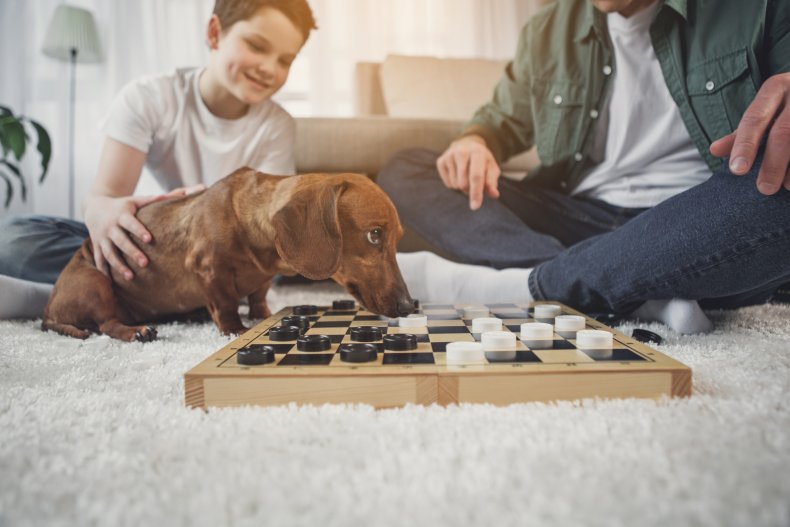What Is the 3-3-3 Rule? Dog Adoption Adjustment Period Explained
Ever heard of the “3-3-3” rule for dogs? A snapshot of a chart referring to the adjustment period for a dog after they’re adopted has gone viral on Reddit.
The image captioned “3/3/3 rule, every dog is different,” shared by Lucy_Pugz on the subreddit forum r/coolguides, has received at least 21,100 upvotes and nearly 200 comments since it was posted on Monday.
Redditor rudebis explained: “This is a general guideline so if the times are longer ie. takes them longer to adjust, give them as much space as they need. It took nearly a year for my rescue to feel comfortable being around us for long periods of time and to start asking for pets,” in a comment that received 685 upvotes at the time of publishing.

iStock/Getty Images Plus
User uniqueusername5001 highlighted the ongoing nature of this adjustment period, noting that dogs “will continue to settle and show further signs of trust and growth for a long time!,” in a comment that received 239 upvotes at the time of reporting.
Here, we unpack the 3-3-3 rule for dogs following adoption.
What Is the 3-3-3 Rule?
The guideline, also known as the “Rule of Three,” refers to the three stages of adjustment an adopted dog will typically experience over different lengths of time, as outlined below.
3 Days
The first three days of your dog’s arrival may see them be overwhelmed by their new surroundings. Below are some of the behaviors your dog may present within this initial three-day period:
- Being scared or unsure of what’s happening: A new environment can be overwhelming for your dog, especially if they’ve spent several weeks at a shelter, explains the Dane County Humane Society, a Wisconsin-based animal shelter.
- Being unable to eat or drink: Many dogs don’t eat when they’re stressed, so you shouldn’t be alarmed if your pet does not eat in the first few days, says Furbaby Pet Care, a Canada-based pet care services group.
- Shutting down: Your dog may want to curl up in their crate or hide under a table or elsewhere. They may sleep a lot during these first few days.
- Testing the boundaries: While dogs may snooze a lot during the initial few days, it’s more likely that they’ll find it difficult to settle down and be easily aroused due to the excitement of the new surroundings, says the Dane County Humane Society. They’ll want to explore and investigate their new environment and test the waters, from whether they’re allowed to go on furniture to where they can go potty.

iStock/Getty Images Plus
3 Weeks
After the first three weeks since their arrival, your dog will start to feel more comfortable and settled in their new home.
Your dog will have got used to more of a regular routine, understanding when their next meal will be given, when they’ll be going for a walk every morning/evening and when they’ll get potty breaks.
Your pet will also start to let their guard down and exhibit their true personality in response to different situations and less of the initial combination of fear, excitement and stress they showed in the first few days.
This period is also when any behavioral issues are likely to show, so it’s important to show your pup what’s right and wrong when it comes to their behavior, advises Furbaby Pet Care.
“You will have narrowed down his behavior problems (if any) to the ones that are likely to remain unless you attend training classes or get help from a dog training professional. It won’t be completely smooth sailing, but the bumps in the road will be less frequent and less stressful,” says the Dane County Humane Society.
3 Months
After three months in their new surroundings, your dog will feel completely at home, being established in a set routine. They will have built trust and a bond with you and feel a sense of security with your family.

iStock/Getty Images Plus




